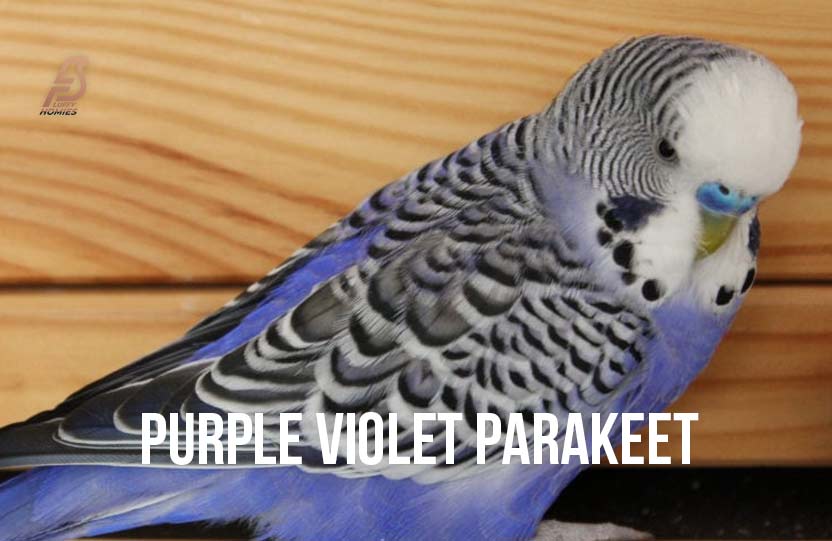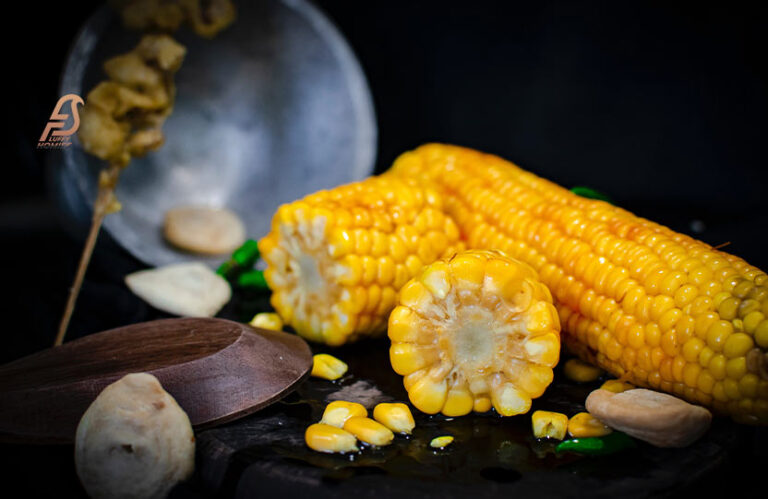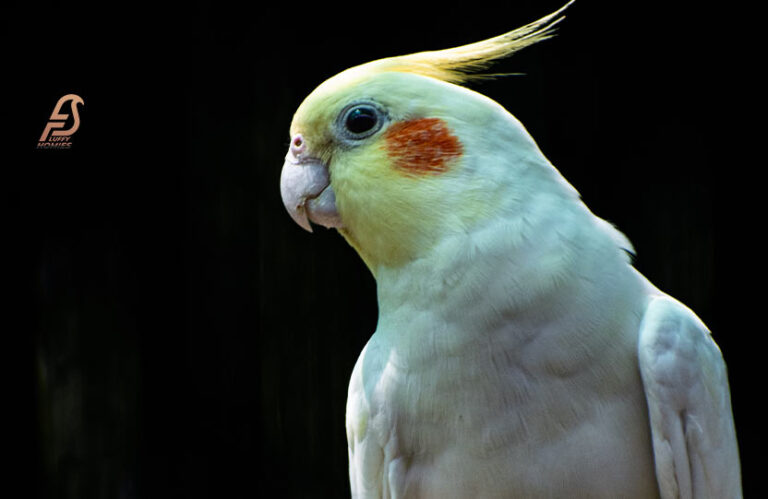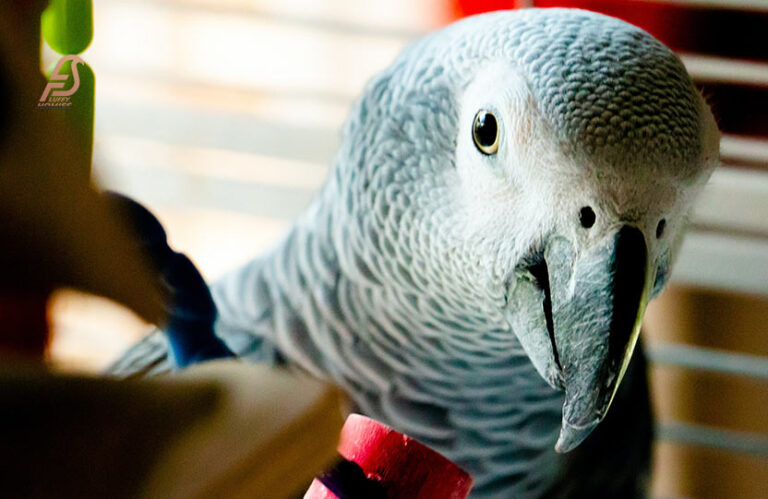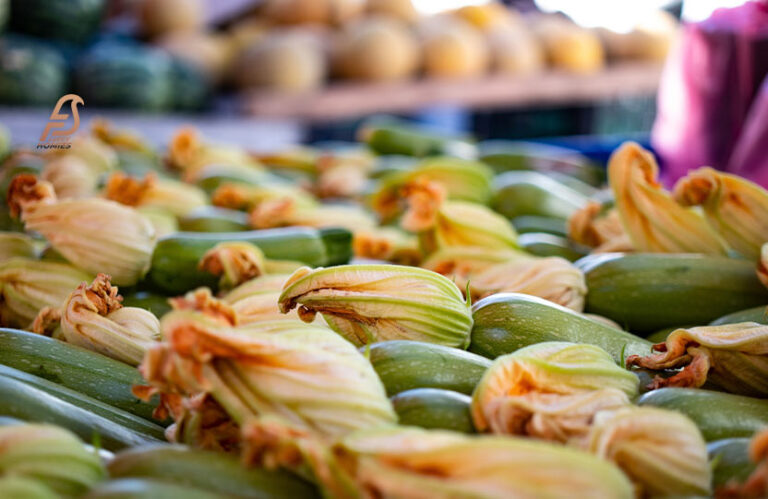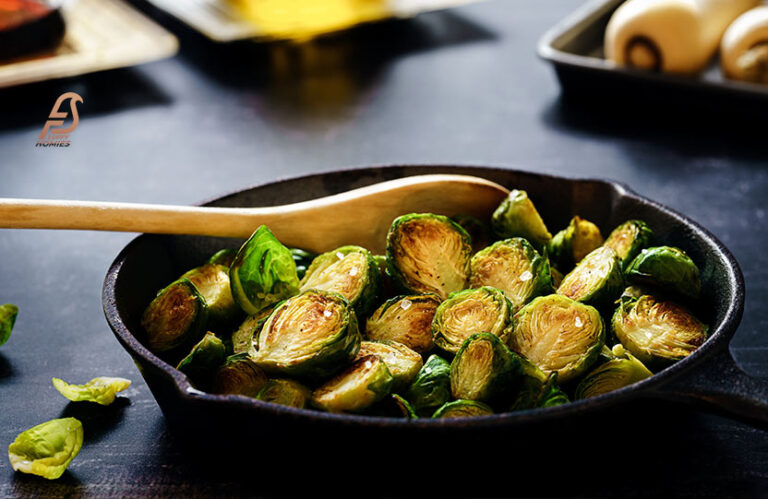Purple (Violet) Parakeet (Purple Budgie Complete Guide 2024)
Purple (violet) parakeets, alternatively referred to as purple budgies, are an attractive and highly coveted parakeet variety.
These avian species have garnered the admiration of avian aficionados globally due to their unforgettable allure and vivid purple plumage.
This article aims to provide an in-depth analysis of purple-violet parakeets, including an examination of their distinctive genetic characteristics, breeding methodology, possible health implications, accessibility, and cost.
If you are intrigued by these captivating creatures or are contemplating the addition of one to your aviary, continue reading to acquire comprehensive knowledge regarding purple-violet parakeets.
Understanding the Violet Gene in Parakeets
Unfazed by bird enthusiasts for years, the violet gene in parakeets is an intriguing characteristic. The purple coloration observed in specific parakeets is attributed to this particular gene, which imparts an aspect of distinctiveness and aesthetic appeal to these endearing avian species.
Breeders and proprietors must have a comprehensive understanding of the violet gene to administer breeding programs and provide appropriate care for these unique parakeets.
The violet gene functions as a recessive trait, requiring the presence of both parental copies for its expression in progeny.
25% of the time, breeding two parakeets carrying the violet gene will result in the production of violet progeny. Conversely, in the absence of the gene in one parent, the progeny will not manifest the characteristic violet hue.
Breeding programs are further complicated by this genetic element, which requires breeders to meticulously select the appropriate pairings to produce violet progeny.
Certain health issues like obesity are also linked to the violet gene in parakeets, in addition to its function in coloration.
According to studies, parakeets carrying the violet gene have an increased susceptibility to specific genetic disorders, including vision impairments and feather abnormalities.
Purple parakeet proprietors must possess knowledge regarding these potential health concerns and administer suitable care to safeguard the animals’ overall welfare.
A balanced diet and routine examinations by avian veterinarians are two of the measures that can aid in the preservation of the health of these exquisite birds.
Purple (Violet) Parakeet Explained
Budgies exhibit a captivating fusion of violet and purple hues, which is a site to witness. These exquisite creatures, often called purple violet budgies, serve as a remarkable illustration of the marvels that genetic variation can accomplish in parakeets.
The distinctive pigmentation of their plumage is attributable to the Violet gene, which imparts these vibrant hues.
The colors exhibited by purple violet budgies are not only aesthetically pleasing but also rare genetically.
When the Violet gene is present in budgies, a distinct hue of purple with violet undertones results. Purple Violet budgies are in high demand within the avian community due to the widespread favorability of this genetic variation among bird enthusiasts.
Breeding purple violet budgies necessitates meticulous selection and specialized knowledge. Because the Violet gene is recessive, the distinctive colors can only be inherited by progeny if it is present in both parents.
Breeders concentrate on combining birds carrying the Violet gene to increase the likelihood of producing violet-purple budgies.
By utilizing a rigorous breeding process, the availability and conservation of these exquisite animals for collectors and enthusiasts are guaranteed.
Also Check: What Is a Lutino Budgie?
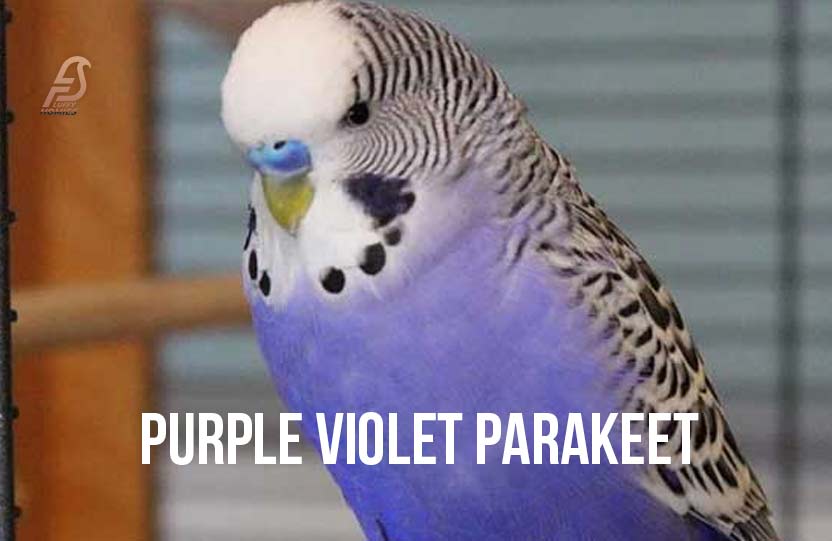
Are These Purple Budgies Real?
A fascination and sense of wonder frequently encircle the notion of purple budgies. Many question whether or not these incredibly vivid creatures are genuine. Although purple budgies are possible, they do not occur naturally as a color variation.
The development of purple budgies involves selective breeding. Breeders have devoted considerable effort to the development of this distinctive hue by employing a blend of meticulous selection and breeding methodologies.
Through the deliberate coupling of birds possessing particular genetic traits, they have successfully generated the mesmerizing purple hue that enthralls avian aficionados globally.
It is essential to note, nevertheless, that the exact hue of purple exhibited by each avian may differ, thereby enhancing their uniqueness and allure.
How Do Purple Parakeets Breed?
Before reproducing purple parakeets, there are several essential considerations like how many eggs do budgies lay. It is essential to begin by comprehending the function of the violet gene.
The purple pigmentation observed in parakeets is determined by this gene that makes budgie smarter than dogs, which is inherited from parent birds to their young.
Breeders frequently choose birds that possess robust violet DNA to guarantee the production of offspring with the intended purple pigmentation.
To propagate purple parakeets, a pair of birds bearing the violet gene is required. This can be ascertained by employing genetic testing techniques or by visually inspecting the parental birds’ coloration.
Spatial expansion of the violet progeny is substantially enhanced when two birds carrying the violet gene are bred together.
However, it is important to note that not all birds carrying the violet gene will produce purple progeny; the ultimate coloration of the birds can be affected by other factors, such as genetic variations or other color mutations.
Breeding purple parakeets requires, therefore, a comprehensive comprehension of the genetic composition of the birds and the meticulous selection of breeding pairs.
How Do You Care for Purple Budgies?
Purple budgies require special attention when it comes to their food, their habitat, and their general health. Maintaining a healthy weight is the priority.
To help them obtain the nutrients they need, offer a variety of foods, including seeds like sunflower seeds, pellets, and fresh produce such as jicama, parsley, and more.
Having access to clean, fresh water regularly is crucial for staying hydrated. Please keep a careful eye on their nutrition and make any necessary adjustments to ensure their best health.
A large cage with horizontal bars for climbing and a selection of toys because they like to climb for keeping their minds active is all they need for a comfortable home.
Keeping the temperature between 21 and 24 degrees Celsius (70- and 75 degrees Fahrenheit) is beneficial to their health.
Seeing an avian vet regularly is important, but so is keeping a close eye out for symptoms of disease, like as changes in behavior or the quality of the feathers.
These birds rely heavily on social contact. Have more than one budgie to keep them company and be sure to spend quality time with them every day.
Furthermore, personal hygiene is critical. Keep their living area clean and provide them opportunities to bathe (using a mister or a shallow dish) to avoid health problems.
Positive reinforcement training sessions might also help stimulate their minds more. The key to a long and healthy life for these lively and perceptive birds is providing them with individualized care that meets their unique requirements, while also consulting an expert when needed.
Also Check: How Many Budgies Should I Get in a Cage?

Health Problem of a Purple Parakeet
Regarding the health of purple parakeets, proprietors should be cognizant of the following concerns. Respiratory issues are widely observed among these avian species that leads to sudden death in budgies.
Purple parakeets are susceptible to respiratory infections, which may arise from exposure to breezes or inadequate ventilation, among other potential causes.
Rigid and potentially fatal respiratory infections can develop if not promptly treated. It is imperative that purple parakeet owners diligently observe their pets for indications of respiratory distress, including sneezing, wheezing, or respiratory distress.
Pluming feathers is an additional health concern that purple parakeets may experience. There are numerous potential causes for this behavior, such as apathy, tension, or underlying medical conditions.
Feather removal may cause skin irritation, panting in budgies, or infections and may cause regions of baldness on the bird’s body.
To prevent feather removal in purple parakeets, caretakers must address the underlying cause of this behavior and provide the appropriate mental and physical stimulation.
Consistent veterinary examinations are also critical to safeguard the general health and welfare of these lively avian species.
How Rare is a Purple Parakeet?
With time, the purple parakeet, particularly one with a violet mutation, has become less uncommon. Once uncommon violet mutations are now more prevalent in parakeets, such as budgerigars.
The observed change in prevalence can be ascribed to deliberate breeding techniques and the maintenance of captive populations containing specific color variants.
The violet mutation induces a change in the parakeets’ customary blue pigmentation, resulting in an assortment of purple tones that are visually arresting and distinctive.
Purple parakeets are consequently less uncommon than they were previously. The heightened accessibility of these avian species has catered to the curiosity of enthusiasts and pet guardians who are intrigued by their distinctive and vivid plumage.
Can You Get a Purple Budgie?
Yes, a purple budgie is possible to obtain. In most cases, budgies’ purple plumage is the product of a mutation that normally produces a violet hue.
This mutation changes the bird’s hue from its typical blue to a range of purples. Purple budgies are a product of deliberate breeding for certain mutations, which allows them to be sold as pets.
Looking for a purple budgie? There are many places to get one, including pet stores, avian breeders, and trustworthy websites that cater to budgerigars of all colors.
You should be aware that the availability of purple budgies could differ depending on where you live and what breeders in your area do.
Make sure you can provide a healthy diet, a large cage, mental stimulation with toys, and frequent vet visits before getting a purple budgie.
The general health of your beautiful feathered friend will improve if you provide it with social opportunities and spend time with it.
Also Check: Do You Need to Cover a Budgie’s Cage at Night?
Purple Parakeet for Sale
If you desire to infuse your aviary with a splash of vivid hues, you might be intrigued by the prospect of acquiring a purple parakeet.
The distinctive plumage of these exceptional birds is due to the presence of the violet gene. Because the violet gene is a recessive trait, for its progeny to display the purple hue, both parents must harbor the gene.
As a result of this genetic prerequisite, purple parakeets are uncommon and in high demand among avian enthusiasts.
It is crucial, when looking to buy a purple parakeet, to ensure that the vendor is a reputable breeder or a reliable source.
This is essential for ensuring the bird’s health and well-being. Before making a purchase, additionally contemplate the bird’s temperament and capacity for merging.
Although purple parakeets possess an indisputable aesthetic appeal, it is critical to bear in mind that they are sentient beings with distinct personalities and requirements.
You can ensure a satisfying and fruitful experience with your new purple parakeet by selecting a reliable vendor and taking into account the specific characteristics of the bird.
What is the Price of a Purple Parakeet?
The cost of acquiring a purple parakeet can be affected by some influencing factors. The cost is determined in part by the age of the bird, the rarity of the color mutation, and the reputation of the breeder or vendor.
It is essential to remember that the cost of a purple parakeet can vary substantially based on the aforementioned variables.
In general, a mature, well-established purple parakeet adorned with vivid plumage will command a higher price than a juvenile specimen or one with subdued coloring.
Additionally, due to their expertise and adherence to ethical standards, reputable breeders who specialize in breeding and caring for purple parakeets may command a premium price.
Additionally, availability can have a direct bearing on the cost of purple parakeets. Due to the rarity of this color mutation in comparison to others, purple parakeet supplies may be scarce, resulting in increased prices.
Conversely, in the event of an excess supply of purple parakeets in the market, prices might become more competitive.
Consult with multiple breeders or vendors to gain a more comprehensive understanding of current market prices and thereby enable one to arrive at an informed decision.
In determining the price of a purple parakeet, it is crucial to strike a balance between your financial constraints and your enthusiasm for this distinctive and eye-catching avian companion.
Also Check: Will Budgies Starve Themselves?
Conclusion: Purple Budgie
In summary, the purple-violet parakeet is an intriguing and distinctive avian species that has garnered the interest of avian enthusiasts and admirers.
By investigating diverse facets of these avian species, including the elucidation of the violet gene, reproduction methodologies, and possible health complications, we have acquired significant knowledge regarding their environment.
Although there have been some controversies regarding the existence of purple budgies, genuine purple parakeets are available for purchase. It is essential to note, however, that the cost of a purple parakeet can fluctuate depending on reproductive quality and rarity.
In its entirety, the purple-violet parakeet imparts an air of vivid hues and aesthetic appeal to the realm of birds. Whether you are an individual seeking to begin a new and thrilling companion journey or an experienced bird owner, the purple parakeet can be an excellent addition to your flock.
Stunning in appearance and endearing in disposition, these birds are certain to enchant and captivate all who behold them.
Therefore, if you are in search of a distinctive and captivating avian companion, contemplate incorporating a purple-violet parakeet into your life and witness the immense delight they can bestow.
Frequently Asked Questions
Observation is the key to identifying your purple cere parakeet’s gender. In budgies, the cere is usually blue for males and brown for females. To get the right identification, look at the cere’s (the meaty region above the beak) color very carefully.
The tail and flying feathers of a violet budgie can be used as identification tools. When compared to regular blue budgies, violets stand out in these regions due to their unusual purple coloring. The existence of the violet mutation may be confirmed by carefully examining these feathers.
Yes, purple budgies are possible. The violet mutation that turns budgies’ normally blue feathers into a rainbow of purple hues is a common cause of their unusual plumage. Bird watchers and breeders covet this striking diversity in plumage.
Budgies of the anthracite kind are quite rare. This rare shade distinguishes these birds from others with similar plumage and adds a desirable, eye-catching feature to their look—its deep, nearly black tone.
